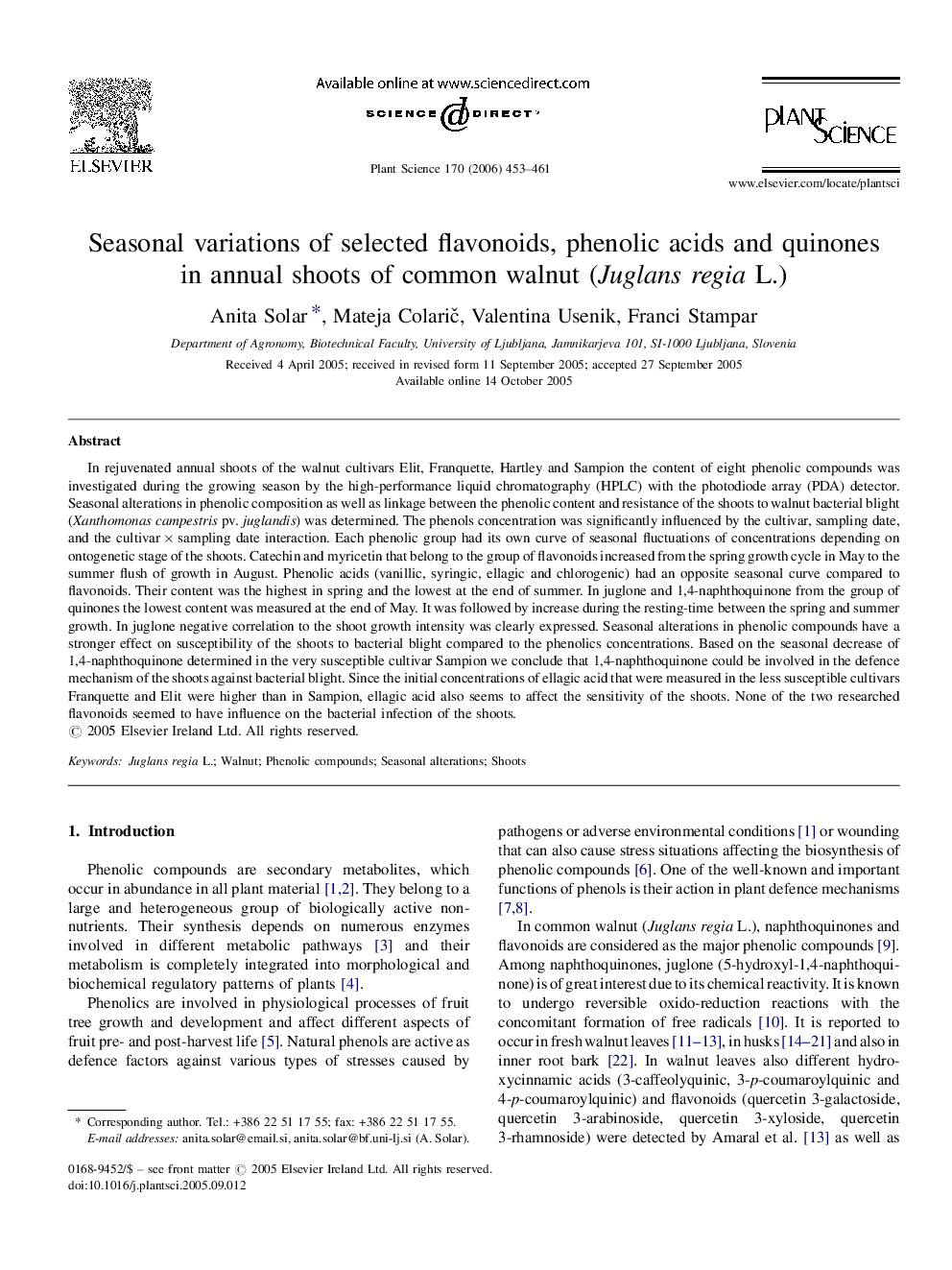| کد مقاله | کد نشریه | سال انتشار | مقاله انگلیسی | نسخه تمام متن |
|---|---|---|---|---|
| 2018856 | 1067886 | 2006 | 9 صفحه PDF | دانلود رایگان |

In rejuvenated annual shoots of the walnut cultivars Elit, Franquette, Hartley and Sampion the content of eight phenolic compounds was investigated during the growing season by the high-performance liquid chromatography (HPLC) with the photodiode array (PDA) detector. Seasonal alterations in phenolic composition as well as linkage between the phenolic content and resistance of the shoots to walnut bacterial blight (Xanthomonas campestris pv. juglandis) was determined. The phenols concentration was significantly influenced by the cultivar, sampling date, and the cultivar × sampling date interaction. Each phenolic group had its own curve of seasonal fluctuations of concentrations depending on ontogenetic stage of the shoots. Catechin and myricetin that belong to the group of flavonoids increased from the spring growth cycle in May to the summer flush of growth in August. Phenolic acids (vanillic, syringic, ellagic and chlorogenic) had an opposite seasonal curve compared to flavonoids. Their content was the highest in spring and the lowest at the end of summer. In juglone and 1,4-naphthoquinone from the group of quinones the lowest content was measured at the end of May. It was followed by increase during the resting-time between the spring and summer growth. In juglone negative correlation to the shoot growth intensity was clearly expressed. Seasonal alterations in phenolic compounds have a stronger effect on susceptibility of the shoots to bacterial blight compared to the phenolics concentrations. Based on the seasonal decrease of 1,4-naphthoquinone determined in the very susceptible cultivar Sampion we conclude that 1,4-naphthoquinone could be involved in the defence mechanism of the shoots against bacterial blight. Since the initial concentrations of ellagic acid that were measured in the less susceptible cultivars Franquette and Elit were higher than in Sampion, ellagic acid also seems to affect the sensitivity of the shoots. None of the two researched flavonoids seemed to have influence on the bacterial infection of the shoots.
Journal: Plant Science - Volume 170, Issue 3, March 2006, Pages 453–461